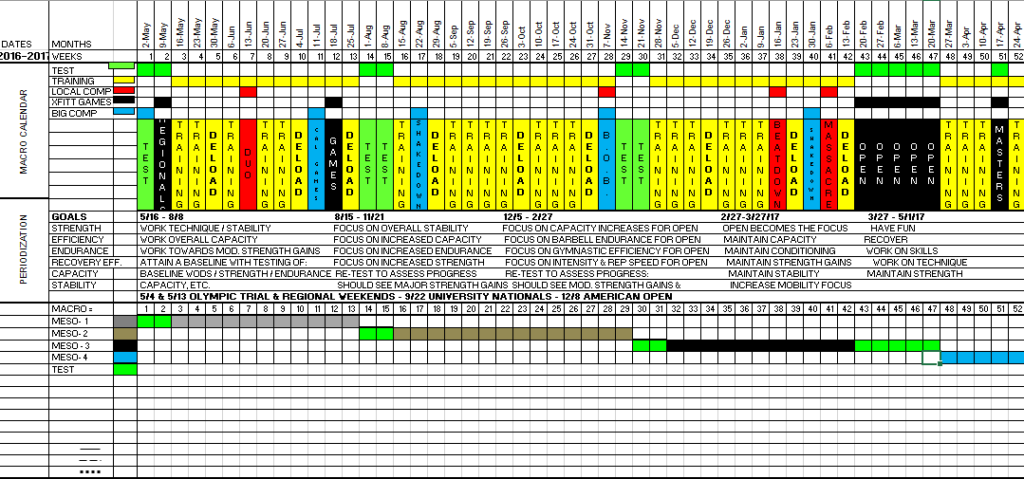*Remember this plan changes constantly as I assess the gym’s daily, weekly, and monthly needs. 🙂
This week we start our first “deload” of quarter 3. Please take this week seriously. Here is a reminder as to why we “deload” and how to handle them for best results.
The ideas behind proper programming execution is to stress the CNS and then take mandatory lighter weeks to allow for recovery and gains. In all traditional strength programs there is what is commonly referred to as a “deload.” In basic terms this is the intentional lowering of volume, intensity, and loading in a program for short periods of time scattered throughout a training cycle. In terms of our cycle, we will take one every 3-6 weeks depending on what micro-cycle we are in. The intended effect of these “deloads” is to increase strength over the long term. As I have stated time and time again, getting better in CrossFit is a process. If you respect the process, are patient and diligent with your workouts and recovery, then you will see phenomenal results. In strength & conditioning programming it is a scientific truth that we DO NOT get stronger and fitter from working out more. We get stronger and fitter when we recover from working out… Mind = Blown! At its most basic level, exercise is simply putting your body under a clearly defined stress so that during the subsequent recovery period, you will adapt to that stress and become fitter. If you constantly go all out, you will eventually stop making gains and you will leave yourself subject to injury. This is a common occurrence in CrossFit. Lack of programming knowledge and the idea of more is better will always lead to injury. Training smarter, not harder, is always the key. However, this fact tends to be overlooked, or completely ignored, in the vast majority of programming found nation-wide.
A classic “deload,” and the way I do it in the Precision programming, is to lower intensity, volume, and load for the duration of one week and ask or sometimes try and schedule more rest days for a short period. For this particular “deload” we will still be training hard but with less volume and load. So it is not a full “deload” like we experienced a few weeks ago. However, if you feel thrashed it is not uncommon to take a week off and then come back refreshed, stronger and generally fitter.
So what are some basic rules you can apply to properly “deload” yourself during one of these weeks?
- Emphasize recovery. Get a massage; take a yoga class; go for a hike. You shouldn’t be working out every day. If you eat a calorie restricted diet or an ultra low carb diet, then take a break from that for a couple of days.
- Be kind to yourself. Many people labor under the misconception that if they take a day off or lower the intensity of their training, they will either lose fitness or gain weight. Nothing could be further from the truth. Give yourself a break.
- Lastly, trust the process I have laid out for you all. A “deload” week is scheduled and planned into your programming. I am accounting for it. If you take the period seriously, most likely you will return a week later to full training volume feeling great and maybe even PR.
Precision, it’s my duty not only to give you the best approach possible to help you reach your training goals, but to also educate you. Respect the process and remember… work smarter, not harder.
Fitness – Strength – Community
WARM UP:
400 M. Run or Row
3 Rounds
10 Pass Throughs
10 Good Mornings
10 Front Squats
5 Inch Worms
Then:
Hip Mobility
SKILL:
3 Rounds
10 Hollow Rocks
10 V-Ups
10 Tuck Ups
10 Sec. Hollow Hold
*Rest 1 Min.
LIFT:
Front Squat
5 @ 60%
3 x 3 @ 65%
WOD:
“121916”
5 Rounds
25 Wall Ball (20/14) (16/10) (10/6)
15/12 Cal. Row
POST WOD:
Roll & Stretch


